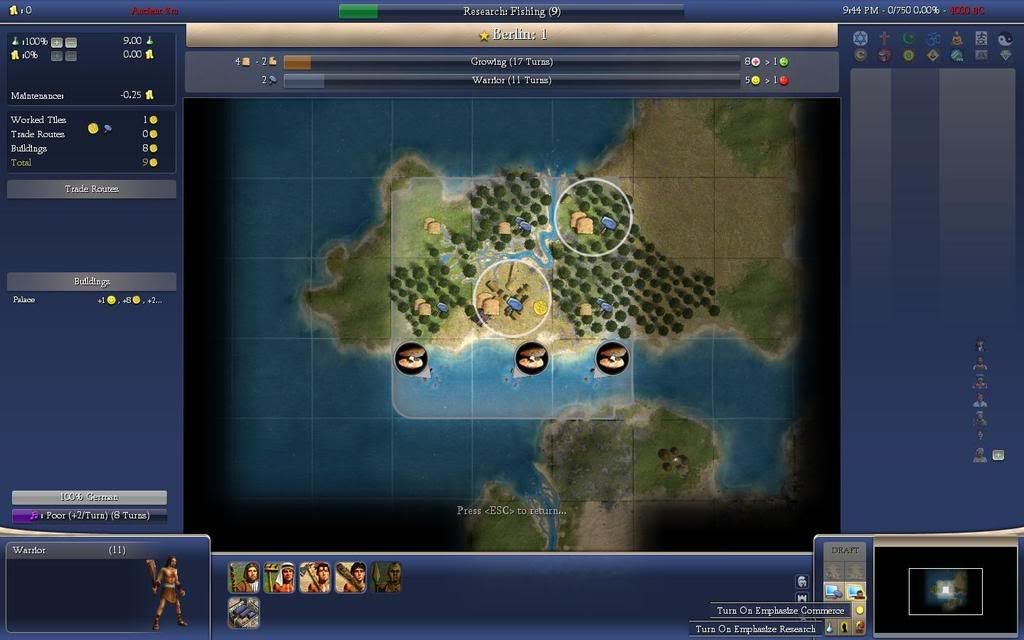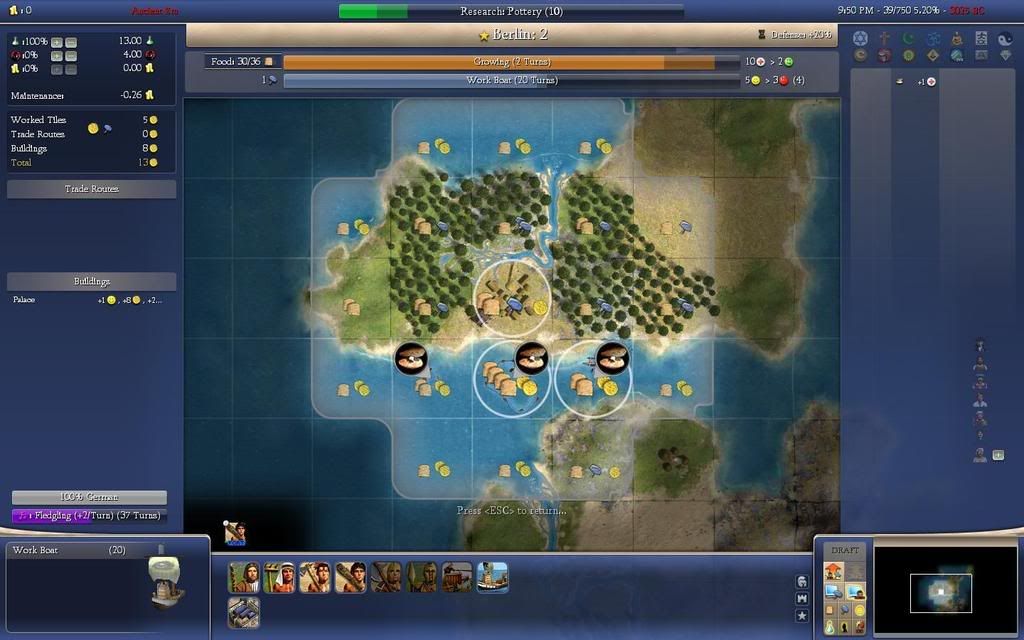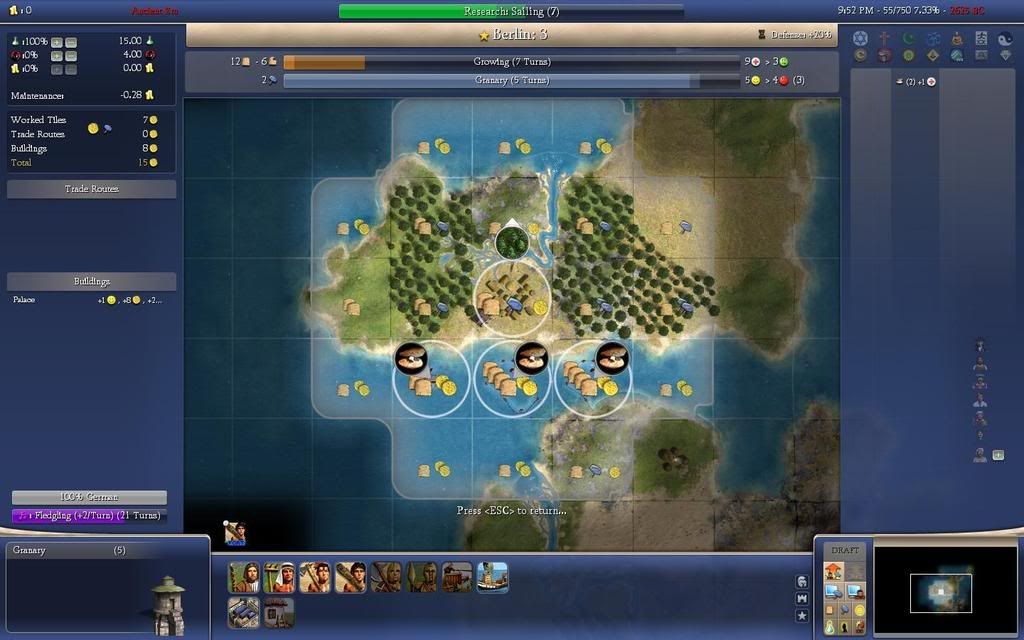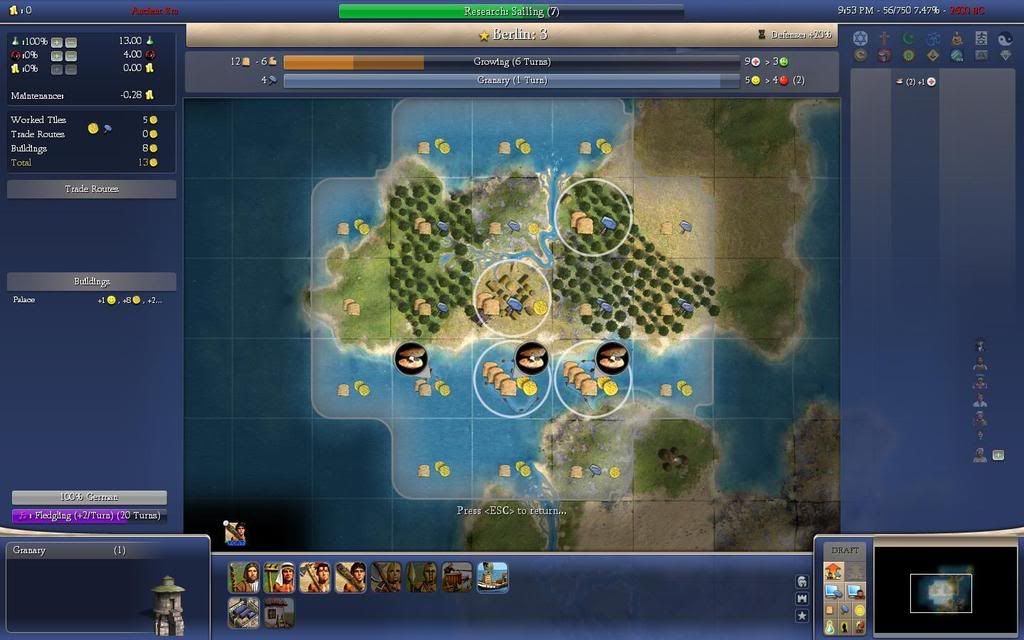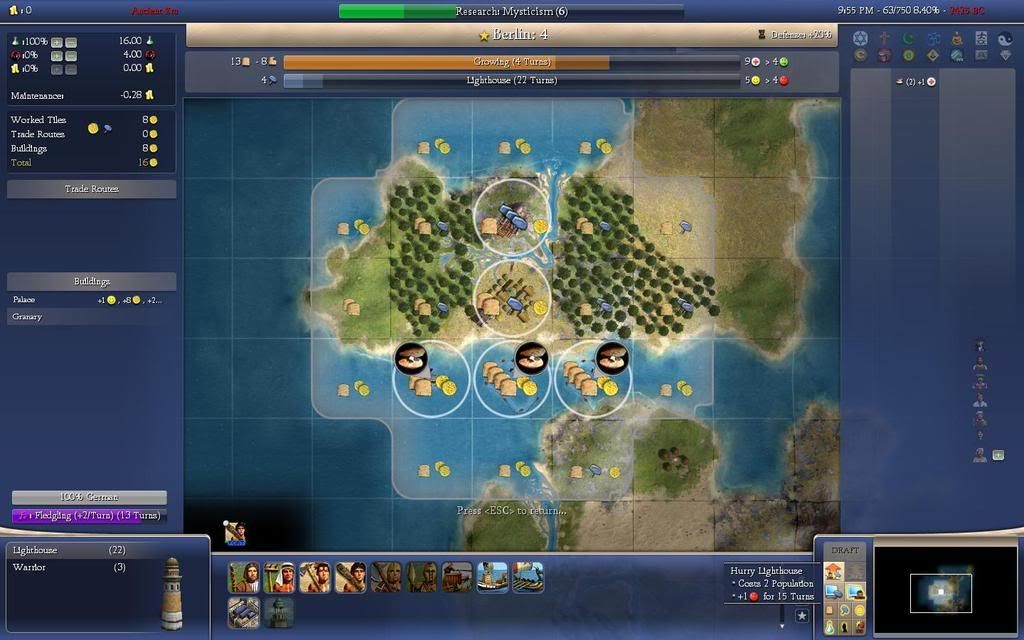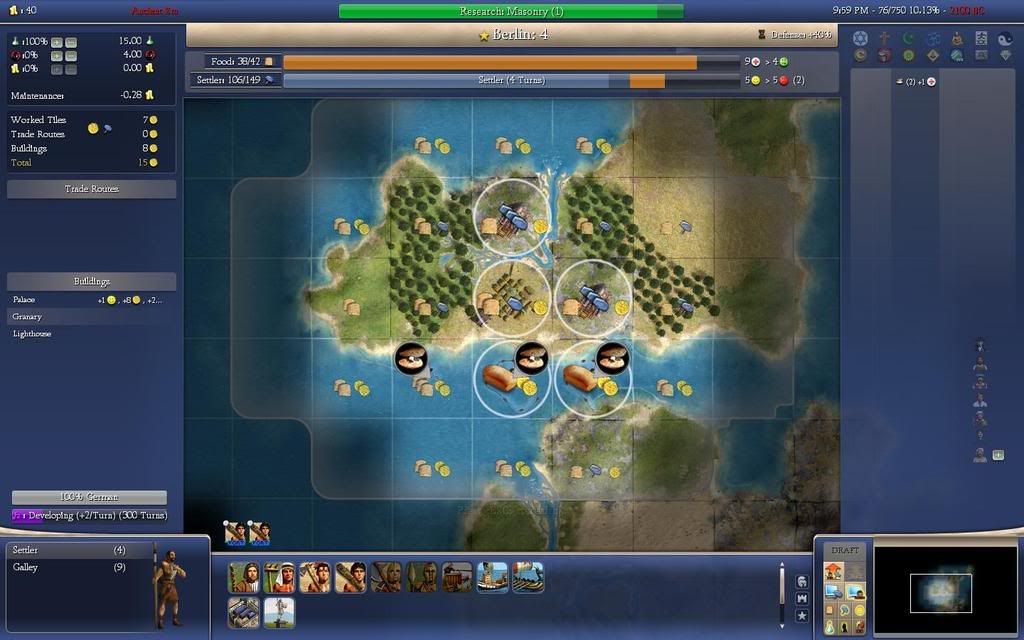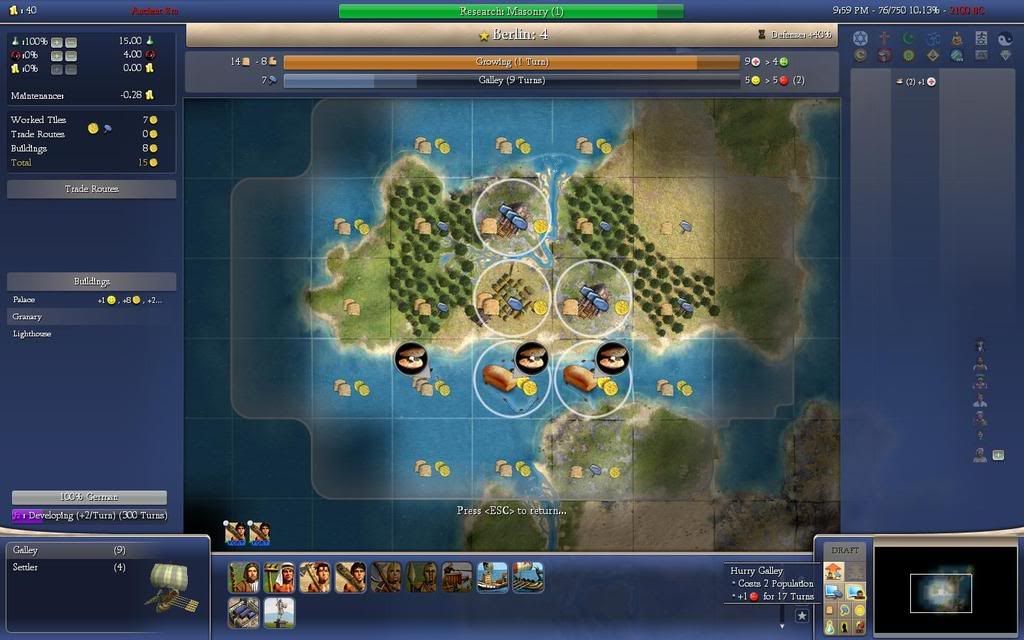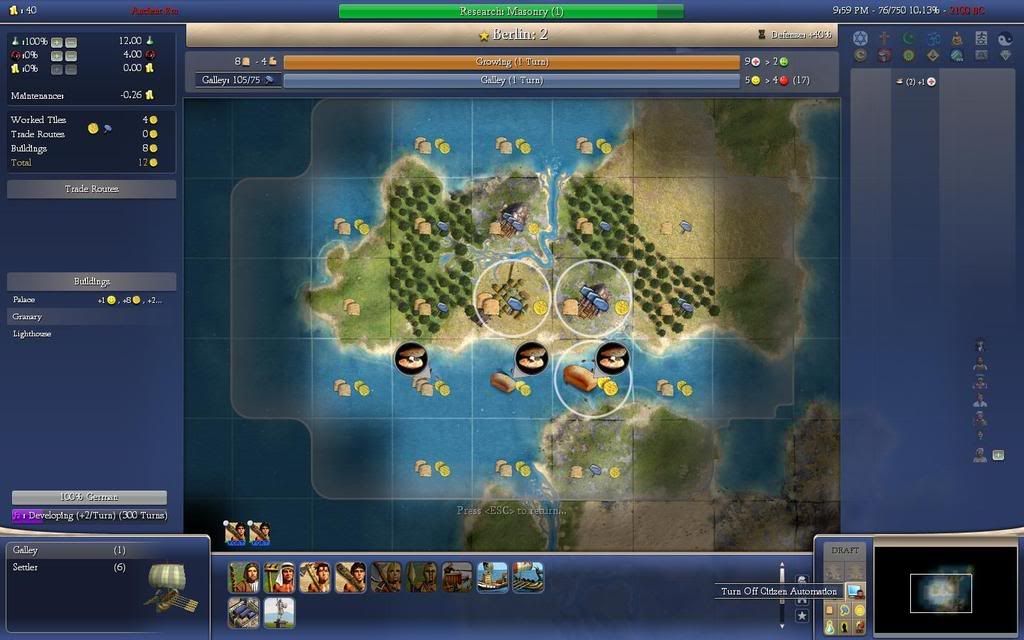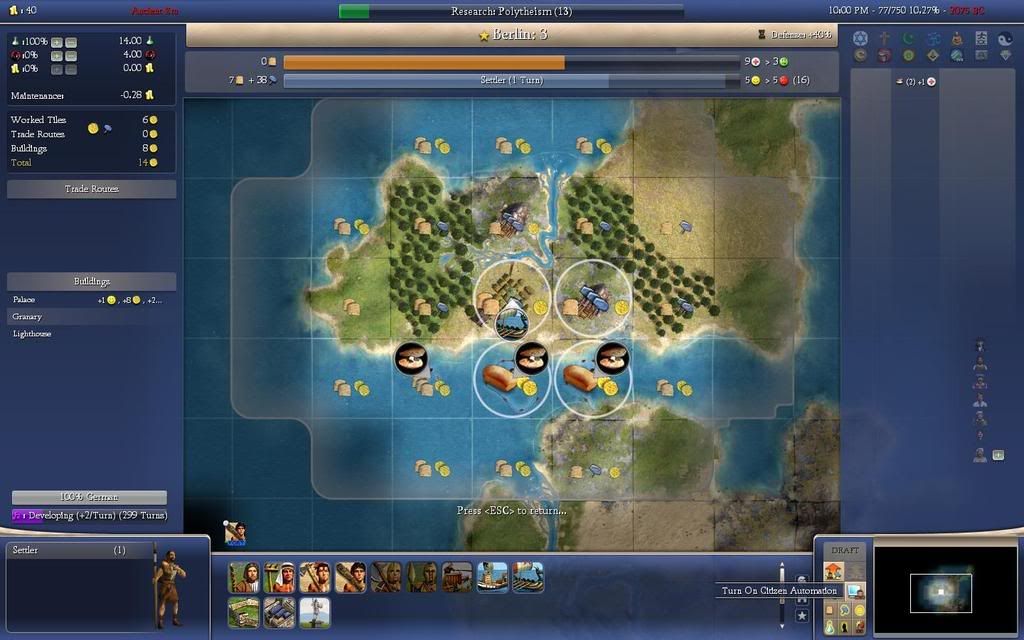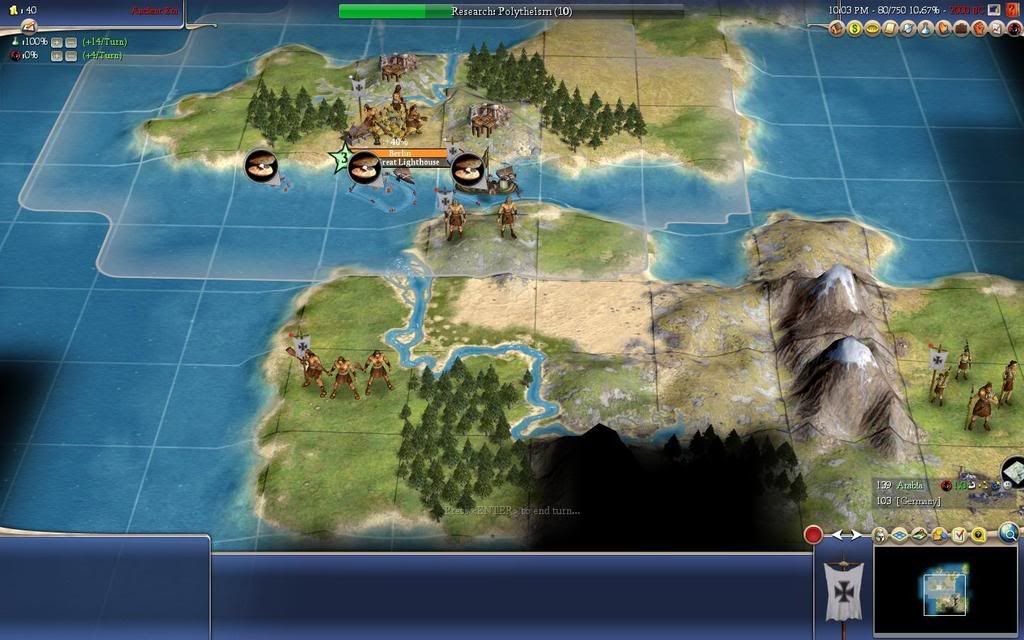Start the "round" like everyone did, settling Berlin on the spot. Commerce is key early. We have lots of techs that we need to get running with maximum efficiency: Fishing, Bronze Working, Pottery (and The Wheel as a result), and Sailing, just to start. Rather than micro around a bunch of tiles, the city governor is actually useful for this. Contrary to popular belief you can get him to do what you want most of the time, saving the hardcore micromanagement for key moments to be discussed later.
First tech researched is Fishing for the obvious reasons. Build a warrior. Second tech researched is Bronze Working as we will slave out our work boats. The city governor is smart enough to work our clams as soon as fishing in, less work for us.
After Bronze working is in, there is an immediate revolt to slavery followed by a whip of the first work boat. There is no need to dump the overflow into a worker, all the accumulated overflow from both work boats will eventually make it to the worker after the second whip (i.e overflow goes right into a second work boat).
First bit of micromanagement, but it is first principles of whipping:
Whip when you can regrow the lost population immediately.
As you can see we get a fair amount of overflow into the worker that is built next. Since it all came dumped in one bit, we only get screwed by the game rounding our 25% bonus once.
Meanwhile we have been teching The Wheel and Pottery. Since we are expansive, we go for the cheap supercharging granaries earlier rather than later. The timing is nice and we finish the worker right as Pottery finishes allowing us to immediately start on this critical infrastructure.
The worker chops rather than mines the north hill as we are following another first principle of whipping:
Get granaries early.
When we hit population 3, the chop is in but the granary will not be built fast enough without some actual tile micromanagement:
So a little bit of toggling to get production up to finish the granary in 2 turns rather than 5. Note that we start prioritizing food when possible here as we can split it as 1 turn on the grass hill forest, one turn on the grass forest. Another general principle is being applied here:
Once the Granary is up, food is a more powerful production tool than hammers if you can manage your growth.
Then
Back over to the city governor's control with a slight update of his priorities while building a warrior to garrison a future city (note I am being prescient here. When my settler pops, it will head straight to the marble even though I don't know where that is technically and the timing here won't let me scout out the area ahead of time):
Meanwhile we have been researching Sailing, and the second that is in we will build a lighthouse for one turn and whip it immediately despite the fact that we have just grown. There are a couple of reasons, one which is a general principle:
Extended periods of no whip anger should be avoided.
And one of which goes back to our prioritizing of food.
After the whip is done, we allow the warrior to complete and start on a Galley which is all well and good until uh oh:
We don't particularly want to stack whip anger like that and cap us at 3 for a while even though we can build a Settler to work it off. Much better is to start building the Settler in preparation for the only real hardcore bean counting micromanagement of the round.
In general, choose a path that allows you to work more tiles rather than fewer.
A few turns later, a check on the status of the Settler shows this:
Seeing as the galley has 15 hammers invested in it, it will overflow 30 hammers plus the hammer output this turn into next turn. So if we whip it now and work a clams and a mine this turn, next turn we can work clams + clams + mine to finish the settler a turn earlier than we could have legitimately.
So we whip:
And once again have to override the city governor who wants to work 2 improved clams (which would not work for our purposes).
And the turn after we can again rehire him. This is an odd screenshot as the Settler doesn't look like he will build out by the bar, but he will.
Meanwhile, the worker, who has had nothing better to do after mining both hills has chopped a forest while waiting for the galley. It came in the turn after the settler and is applied to the Great Lighthouse. You can see in this screenshot that the micromanagement of working the hill the turn of the galley whip was critical. Only 2 hammers of overflow, so that was by the skin of our teeth.
And the 2000BC position:
Tech path was:
Fishing
Bronze Working
The Wheel
Pottery
Sailing
Mysticism
Masonry
Start Polytheism
Not the greatest amount of research done there, but the point was a demonstration of production and micromanagement (although I like to think there wasn't that much micromanagement involved.

 I will still contribute to the discussions here though. I will let you know as things progress.
I will still contribute to the discussions here though. I will let you know as things progress.